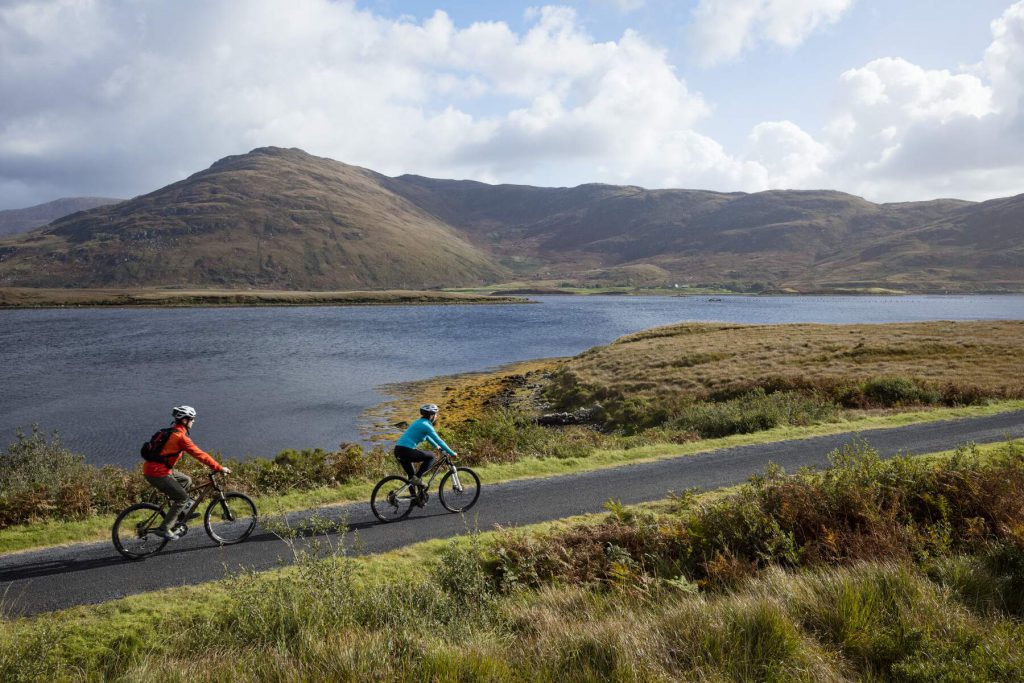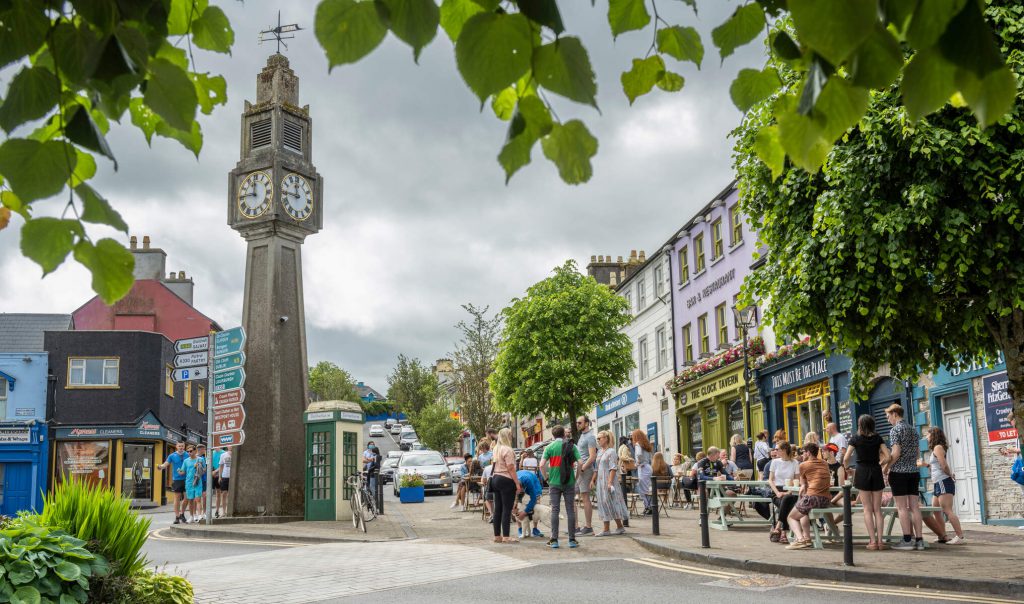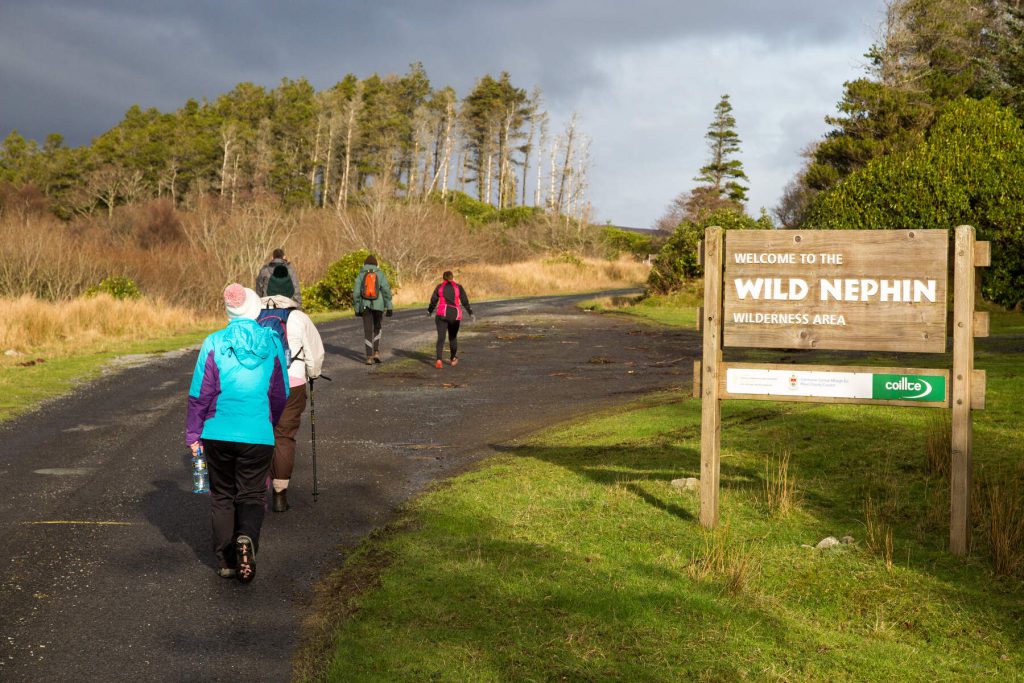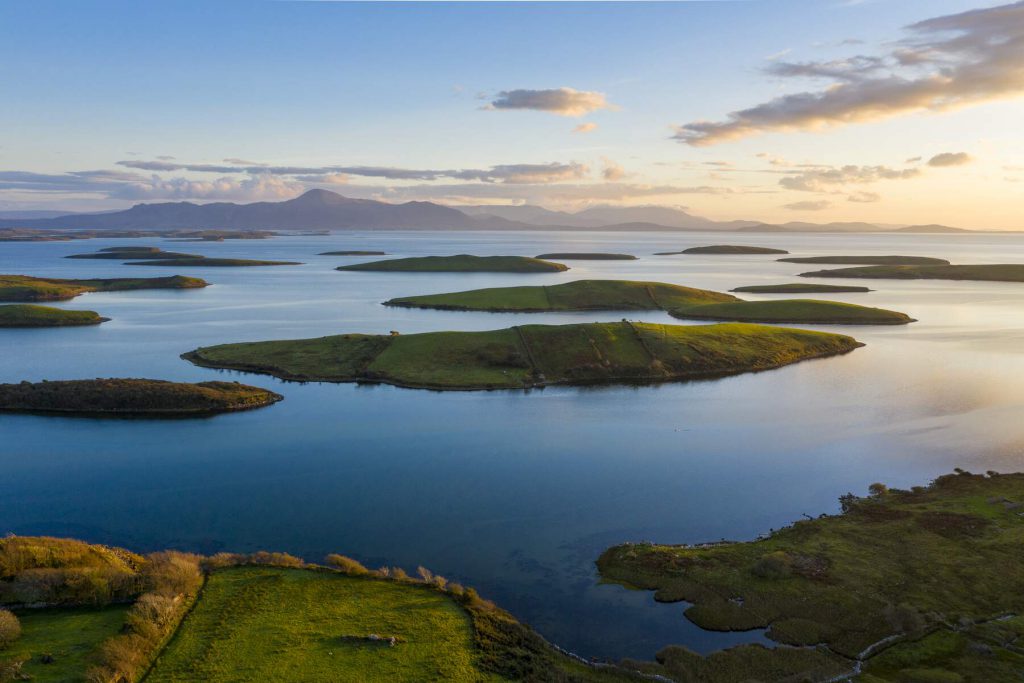
By Barry Coughlan
The County of Waterford has been rightly hailed for the heavy investment in a Greenway between Dungarvan town and Waterford city. The relative simplicity of design and spectacular beauty to behold on sections of the route of 28 miles has made this a road well travelled for me and members of the family.
But Waterford has to share top billing with others in different parts of the country, not least, of course, the Great Western Greenway that runs 27 miles around the eastern and northern stretches of Clew Bay in County Mayo on the Wild Atlantic Way; it’s less than one mile short of the Waterford success story.
Residents of Mayo and those who have tracked the trails of both will say that each of them yield equally enriching experiences of an Irish landscape that has a visual surprise virtually around every corner.
The Great Western Greenway forms part of the National Cycle Network which is being developed throughout Ireland.
The Greenway project was developed by Mayo County Council in partnership with state agencies and co-funded by the Department of Transport and Failte Ireland. It has been of crucial importance to develop tourism in this beautiful area which now ranks as one of the premier walking and cycling destinations in the country.
But the Greenway isn’t the only stretch of land that is designed to captivate the heart in this part of the country. County Mayo is also famous for having Ireland’s highest cliffs at Croaghaun, Achill Island, while the Benwee Head cliffs in Kilcommon Erris drop almost straight down 900 feet into the Atlantic Ocean.
On the west coast, Mayo’s scenery is described in one guide as “verdant to desert like”. Clew Bay is dotted with small, steep-sided islands, including Clare Island. At the eastern end of the bay, Westport town is known for its Georgian architecture and Westport house. Nearby is the much-vaunted Croagh Patrick, a mountain linked to, yes you’ve guessed it, St Patrick!
Mayo is the third largest county in Ireland with an area of 2,150 square miles, but its population density is just a third of Cork and half of Galway, the biggest counties in the country. With a small population of just over 137,000 (2022 census) visitors will therefore not feel any sense of agoraphobia, and will find wide open spaces at every hands turn.

The biggest towns are Castlebar and Ballina with populations respectively of over 12,000 and 10,000 while Westport has just over 6,000 people; the rest of the Mayo total is dotted throughout the county in smaller towns and villages.
Cong is one of those important villages for tourism, a delightful little place on the north eastern shore of Lough Corrib made most famous as the setting for the film ‘The Quiet Man’, which starred John Wayne and Maureen O’Hara.
Among the many places to visit here are the 12th century Cong Abbey, Ashford Castle, Cong Wood and of course locations associated with the film.
Foxford is a must see for the famous Woollen Mills alone and the picturesque village of Louisberg is home to Blue Flag beaches and, I’m reliably informed, a magnificent Gaffney’s Seafood Restaurant and Pub where I’m told you’ll get the best pint in the west of Ireland.
Whatever your choice of destination in Mayo you will be impressed with the large range and high standard of accommodation, restaurants, coffee shops and pubs, as well as the top attractions and modern leisure facilities in so many of the welcoming towns and villages.
In terms of a single contribution to the development of Mayo and its enhancement as a tourism venue, few men can have achieved as much as Catholic priest, the late Monsignor James Horan who was parish priest of Knock from 1967 until his death in 1986.
Catholics throughout the world will thank him for driving through the building of a basilica in the village which can house up to 10,000 people when they travel there to pay homage to the Virgin Mary, St Joseph and St John the Evangelist who appeared to 15 local people, young and old, in 1879.
In the latter part of the 20th century Knock’s popularity increased steadily, making it one of Europe’s major Catholic Marian shrines, together with Lourdes and Fatima. Today this shrine is visited by one and a half million pilgrims annually and is boasts past visits from Pope John Paul 11 in 1979 and Mother Teresa of Calcutta in 1993.
Monsignor Horan operated outside his scope too by pushing for and persuading the powers that be to build an airport for the west – opened in 1986, just a few months before his death – to get the tourists in and business people out when required; today it’s known as Ireland West Airport with flights to 24 points in Britain and Europe, aimed not just at the pilgrim but the business and leisure market.

Killary Harbour, An Caoláire Rua in Irish, is the Republic of Ireland’s only fjord, which forms a natural border between counties Galway and Mayo. It is 10 miles long and in the center over 150 feet deep. On its northern shore lies the stunning mountain of Mweelrea, Connacht’s highest mountain, rising to 2700 feet. Two other fjords in Northern Ireland are Lough Swilly and Carlingford Lough.
The unspoiled wilderness of the area is enriched by the many contrasts that its natural landscape offers, from the cool blue of the ocean to the deep green of the hills in summer, and from the deep purple heathers to the russet autumn mountains that surround this tranquil haven.
Established in November 1998, Ballycroy National Park incorporates 27,000 acres of Atlantic blanket bog and mountainous terrain. Sited on the western seaboard in northwest Mayo, overlooked by the Nephin Beg mountain range, it is one of the last intact active blanket bog systems in Ireland and Western Europe.
It is Ireland’s sixth National Park and it protects a variety of important habitats, the predominant one being the Atlantic blanket bog, which covers most of the Park area. Other habitats include alpine and wet and dry heaths, upland grassland, lakes, and two rivers.
Corrie lakes in the Park, such as Corryloughaphuill Lough, are evidence of glacial activity over the past 2.5 million years and glacial boulder clay at the southern edge of the Nephin Beg mountain range, is also indicative of glaciation.
Walkers will delight in the open spaces and opportunity to trek for short or long periods throughout the county. Letterkeen, for instance, is the access point to the Park and offers three separate walking routes for different levels of fitness.
For the really brave, experienced and fit (very) walker, the Bangor Trail is an arduous and remote hiking trail, approximately 25 miles in length from Bangor to Newport.
It is a way-marked walking trail on mainly blanket bog terrain, and it follows an old drover path possibly dating from the Iron Age.

Mayo boasts much more too. Clew Bay (in Irish: Cuan Mó), overlooked by Croagh Patrick to the south and the Nephin Range mountains of North Mayo, is the most spectacular bay in Ireland.
The area is described in one brochure thus: “The bay has 365 islands, one for every day of the year; 117 of them are Ireland’s best example of drumlins of limestone, which come up in all shapes: ovals, lozenges, snakes, dragons, arrowheads or long-legged beasties. Clare Island, the biggest island, guards the entrance of the bay.”
To the naked eye, visitors would find it impossible to count the islands and despite my best efforts on a visit a few years back I was unable to find the remote island of Dorinish which was owned by John Lennon of Beatles fame who visited there but was never to carry out his plan to fully escape the pressures of life and fulfil his dream of spending long undisturbed bed-time together with Yoko Ono.
The most amazing view of Clew Bay is from the climbing path of Ireland’s famous ‘Holy Mountain’ Croagh Patrick, also known as “The Reek”, where you can easily pick out Achill and Clare Islands and Westport, an Irish Heritage Town that provides a welcoming haven for the droves of overseas visitors it attracts annually.
It is just another must-see part of this uniquely beautiful part of Ireland.
